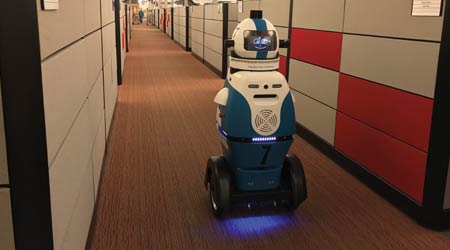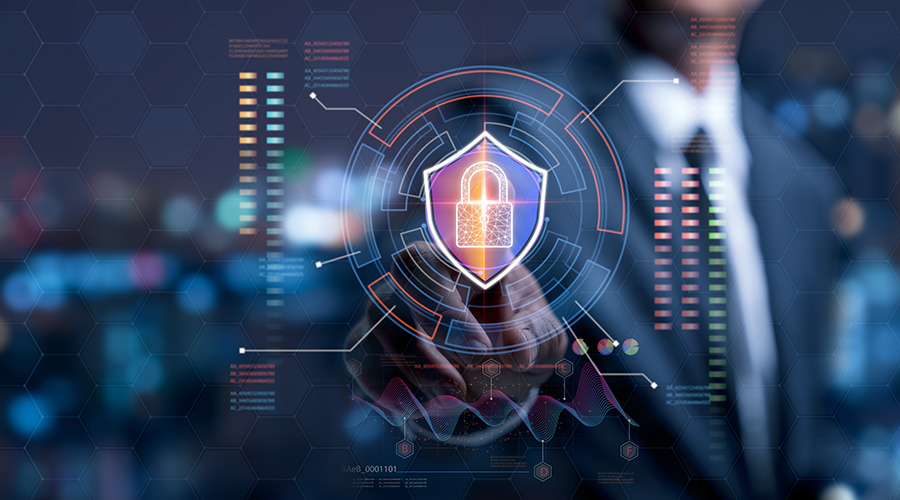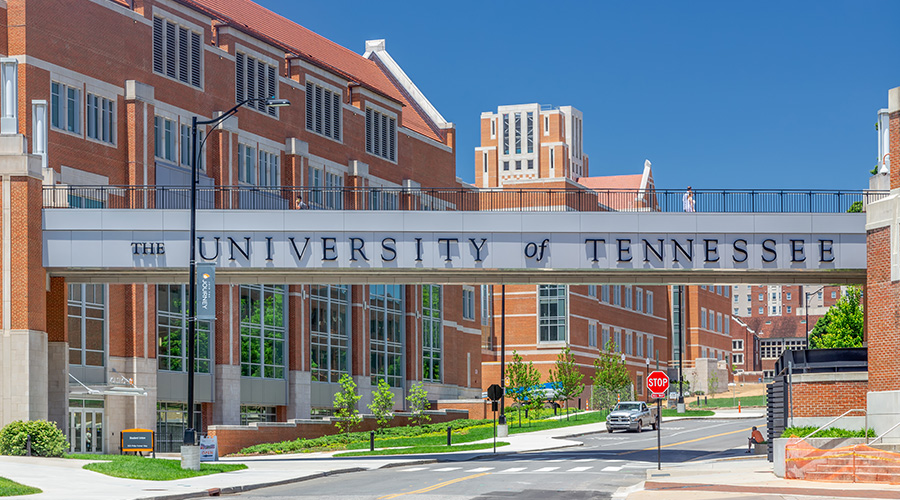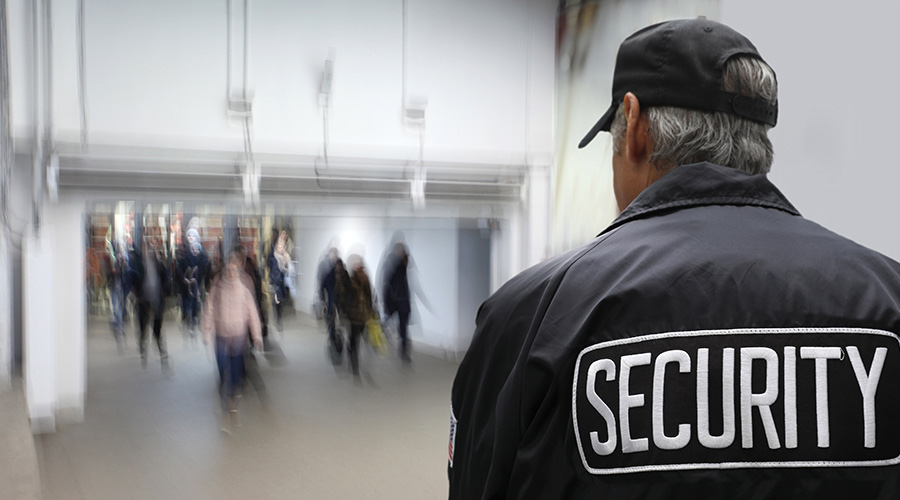 Security robots, such as Gamma 2 Robotics’ RAMSEE, can be used to augment an organization’s active surveillance efforts.Gamma 2 Robotics
Security robots, such as Gamma 2 Robotics’ RAMSEE, can be used to augment an organization’s active surveillance efforts.Gamma 2 RoboticsSecurity: Video Analytics and Machine Learning Gaining Momentum
Soon, machine learning for security technology will take information gathered and transform it to real-time actionable data.
Video analytics is one area in physical security where the public’s expectations initially far outstripped the capabilities of the technology. “Initially, when video analytics first came out, it had a lot of hype,” says Schreiber. “We’re at a point where the technology has advanced so much that there’s a video analytics application for almost any type of large facility.”
Passive video surveillance is common and gathers video for forensic purposes. Video analytics come into play with active video surveillance. Simple solutions, says Schreiber, include monitoring an area for activity when there should be none, or sensing direction of travel in trip-wire setups. Outdoors, a simple analytics application might be detecting motion at the perimeter. Algorithms have advanced to the point where the movement of trees or rain no longer set off false alarms.
However, the current state of off–the-shelf analytics is still relatively limited, says Coleman Wolf, security practice leader at Environmental Systems Design. “It’s a tool and it can certainly do some great things, but people have to understand the limitations of that tool,” he says. “I always caution clients that it doesn’t replace human thought process. It should be used as a sensor, but you really still need a person to be part of the assessment.”
In the near future machine learning for video analytics, and physical security in general, will take all information gathered from security devices like cameras and door readers and turn it into real-time actionable data. One problem this will address is the sheer volume of security notifications at a large enterprise. “Here at Microsoft, we have over a million alarm point events a week,” says Anderson. At Microsoft all of the buildings have cafes, and often employees hold open doors for each other. It is not practical to respond to every door-held-open alarm simply due to the volume. However, Anderson says, if four door-held-open alarms happen in a row, at the front door, then at internal doors, then at an upper floor, that establishes a pattern where someone could be bringing something in. “So we want to teach the machine to look for those patterns that a human really couldn’t see because of the volume,” Anderson says. The system would then trigger an alert for the human operator to evaluate the situation.
Machine learning in video analytics could involve building heat maps showing normal activity in the space, and when the camera detects motion outside of that heat map an alarm is generated. In the future, facial recognition, which is already used in government settings, might be used in a corporation to detect persons of interest, such as terminated employees returning to campus, or perhaps an unauthorized person entering a secure area, even if they used a badge with the proper credentials to swipe in. “It’s using all of these edge devices that every building has, cameras, card readers, and intrusion systems, and taking that data and putting it somewhere so that a machine can learn, and make it useful,” says Anderson. “That’s a huge step in the future.”
Tech on deck
A security technology which is still finding its footing is using LED fixtures as a platform for surveillance and other security-related devices. The premise is that, as native digital appliances, LED fixtures can house any range of devices, such as cameras, occupancy sensors, wayfinding beacons, and on. “So now you can put a camera anywhere you want, any time,” says Ray Bernard, president and principal consultant, Ray Bernard Consulting Services. A distributed security network enabled by the ceiling fixtures could be instrumental in locating individuals during an emergency, for example. The challenge is having the foresight to install the hardware at the beginning of a project so that the cost is minimized. A key question: “What is it that you want to put in when you’re putting in intelligent LED lighting that maybe you won’t be able to use right away, but will be there next year.” This is particularly important given the longevity of LED fixtures.
One change Anderson expects to see sooner than later is the dissolution of the traditional security operations center in favor of a cloud-as-a-service model. A benefit will be that everyone on the security team responding to an event will be getting the same information in the same format. “Your edge security managers will be able to participate more in step,” Anderson says.
Email comments to naomi.millan@tradepress.com.
Related Topics:













